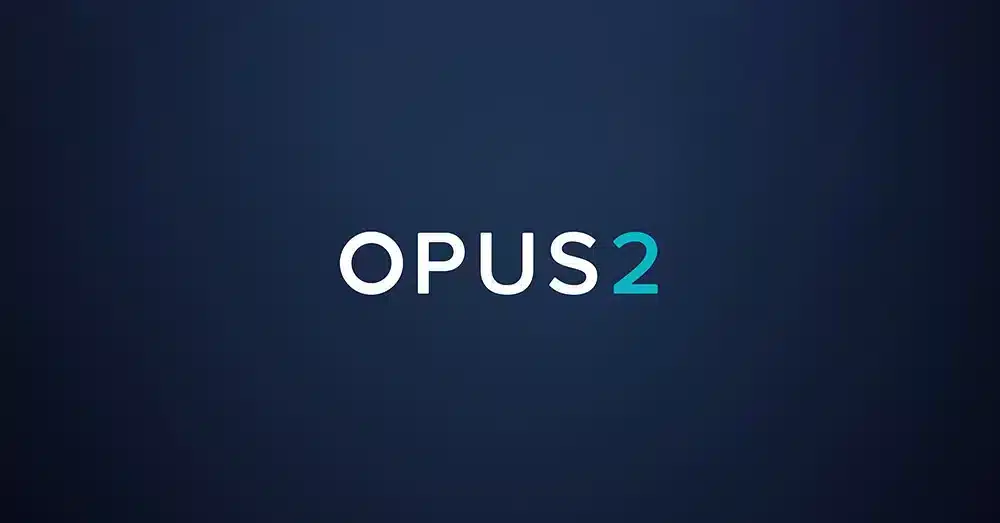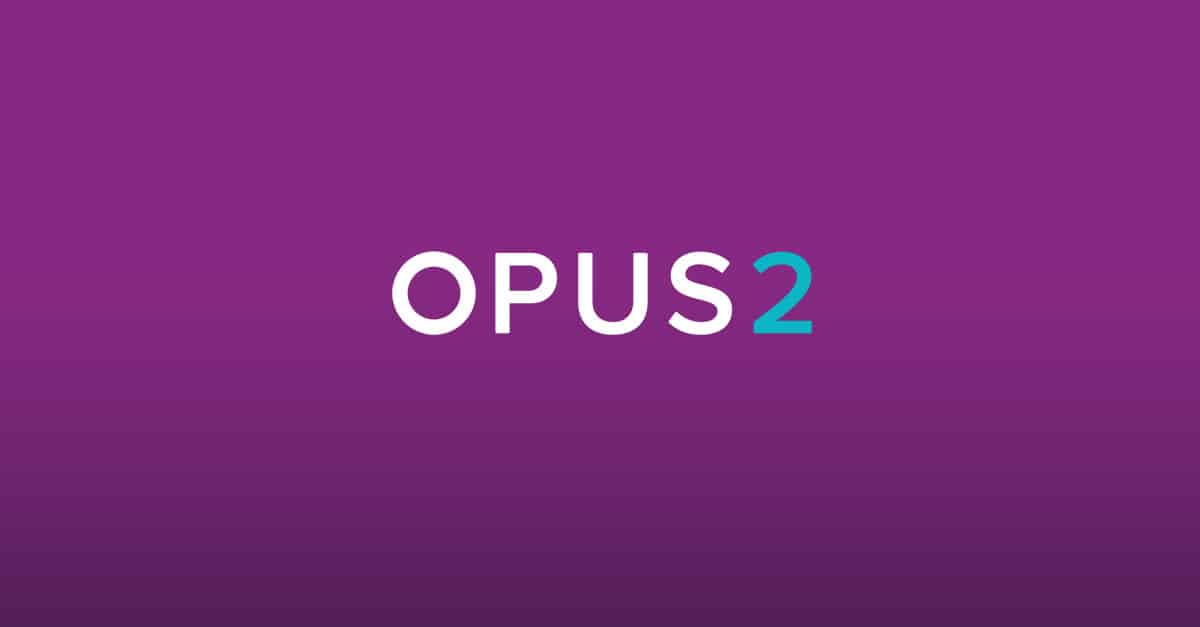Expedited arbitration is designed to deliver faster, more efficient (and thus more cost-effective) outcomes. However, despite the benefits, the use of this accelerated process is still relatively limited. Why? At least in part, the hesitation is likely due to concerns about meeting tight deadlines – a challenge that can be solved with proactive planning and thoughtful use of technology.
In this article, I will explore expedited arbitration and the use of technology. To start, I will provide an overview of expedited arbitration, the current use of the process, and why it isn’t used more often. Then, I will explain how technology enables expedited arbitration, the benefits it delivers, and ways to incorporate technology into your approach to expedited arbitration.
Contents
Expedited arbitration overview
– Qualifications for expedited arbitration
– Current usage of expedited procedures
– Why isn’t expedited arbitration used more often?
Using technology to make expedited arbitration more manageable
– Benefits of technology in expedited arbitration
– Increasing technology adoption to facilitate expedited arbitration
– How to select the right solution
Expedited arbitration overview
Historically, arbitration has been intended to deliver speedier and more efficient outcomes than litigation. However, when it comes to current feelings about arbitration many have concerns. Primarily, arbitration practitioners report that the time and cost of arbitration are major concerns and two of its biggest drawbacks.
In response, many leading arbitral institutions have updated their rules to provide for expedited arbitration in recent years. Naturally, the specifics differ from one institution to another, but in a nutshell, the rules are designed to abbreviate the most time-consuming parts of traditional arbitration.
Modified rules for expedited arbitration may include:
- Limiting the number of submissions parties can make
- Shorter time limits on filing submissions
- Deciding a case on a document-only basis
- Using a sole arbitrator rather than a panel of three
- Setting specific time limits for rendering the award
Qualifications for expedited arbitration
As you might expect, using an accelerated process might not be a suitable solution for complex, high-value disputes. Similar to the differing rules mentioned above, each institution has established its own guidelines and processes for using expedited arbitration.
Most institutions adopted provisions giving the parties the choice to agree to opt into the expedited process. Or they set a disputed amount threshold under which the expedited procedure applies. Depending on the institution, these provisions may be applied automatically to qualifying disputes or the parties may be required to opt in.
Irrespective of differences in approach, the aim was the same; to give parties a way to adjudicate their dispute in an expedited manner and change the perception that arbitration is expensive and very time-consuming – but the results are mixed.
Current usage of expedited procedures
Given how dissatisfied parties are with the time and cost of arbitration, you might expect that expedited procedures would prove significantly more popular. While there has been a slight uptick year over year, the overall percentage of disputes using expedited arbitration doesn’t seem to indicate widespread adoption.

Why isn’t expedited arbitration used more often?
When considering the ratio of expedited proceedings to standard arbitration, it’s worth noting that some disputes won’t qualify, and others simply won’t be a good fit. While a number of institutions use value to qualify a dispute for expedited arbitration, value does not always correlate with complexity. Accordingly, if a dispute qualifies for expedited arbitration based on value, but is complex, the parties may prefer a standard arbitration process.
On the other hand, for relatively simple disputes in need of a speedy resolution, expedited procedures can prove very useful. However, potential barriers and considerations have been raised that may contribute to low usage.
When disputes that qualify for expedited arbitration decline to take advantage of it, time constraints tend to be the primary consideration. Parties may be apprehensive about meeting strict time frames. Additionally, some arbitrators worry they will be unable to issue an award in the short time provided.
There’s also a concern that the procedural restrictions imposed by the expedited process could be used to set aside or resist enforcement of an award if a party successfully argues that the rules created a breach in the principles of fairness, equal treatment, or the right to be heard.
Using technology to make expedited arbitration more manageable
For an expedited procedure to be successful, you need to be able to reduce time spent on case management tasks and maximise time spent on the substantive aspects of the case. Leveraging technology to enhance efficiency may be the solution – and many arbitration practitioners agree.
An International Arbitration Survey found that 61 percent of respondents think that “increased efficiency, including through technology” is the most likely factor to shape the future of international arbitration. Additionally, 80 percent of respondents believe that arbitral institutions have the best chance of influencing the future of arbitration.
So, can technology be the answer to taking advantage of expedited procedures? With the right technology, the answer is certainly yes.
Technology makes expedited arbitration more accessible by enabling parties to meet stricter time limits, present the case in a limited number of submissions, provide the right information for documents-only decisions, and deliver information to help sole arbitrators make decisions fairly and quickly.
Benefits of using technology in expedited arbitration
When adopted from the outset, technology helps practitioners achieve the original goal of arbitration – making dispute resolution faster, more efficient, and more affordable.
When applied to arbitration, technology can:
- Save time with features and tools designed for disputes
- Enhance counsel efficiency, organisation, and collaboration
- Improve client satisfaction by reducing arbitral expenses
- Enable preparation of e-briefs/e-bundles, and interlinked submissions
- Deepen the Tribunal’s understanding by centralising key information
- Speed document collection and verification
- Provide tools to catalogue, organise, link, and review documents
- Grant counsel a full case view, enabling better analysis and more concise submissions
- Reduce initial time required to understand a case
- Empower proactive work like drafting witness statements prior to proceedings
- Enable more efficient case management with visualisation tools
Increasing technology adoption to facilitate expedited arbitration
Expanded use of expedited arbitration delivers benefits to everyone involved – the parties, counsel, arbitrators, and institutions. And each of these participants can take action to encourage the adoption of technology that makes the process more approachable, manageable, and accessible. Here’s how:
For parties: Include a detailed expedited arbitration clause in your contract
Taking a proactive approach is the best way for parties to take advantage of expedited procedures more often. If both parties can agree to the details when in the contract drafting stage, they will each be equipped to successfully navigate the expedited arbitration process.
Consider including the parties’ consent to the use of expedited arbitration, the rules that will govern the case, and what technology the parties will use. Setting these expectations early ensures that both parties are prepared to move quickly if a dispute arises.
For counsel: Discuss the need for technology at the initial case management hearing
If not included in the contract, counsel can address the use of technology after the arbitration has been initiated. Coming to an agreement early, during the case management hearing, with the Tribunal can help make both sides in a case comfortable and confident in their ability to meet expedited timelines while alleviating concerns about due process.
Being able to anticipate the need for IT throughout the case and address it early is essential. Indeed, according to ICC’s Report on leveraging technology, parties are likely to see greater benefit from agreeing to use an online case management platform from start to finish of a case (for example) than if they only agree to use it once the evidentiary hearing approaches.
While the investment may be a concern, especially at the early stages of a case, the right solution can streamline workflows, standardise submissions, and improve efficiency, contributing to reduced costs overall. When determining if technology will be used to facilitate the expedited process, counsel and the parties should consider the costs involved. Without technology, will the parties still pursue expedited arbitration? If not, how much more will the traditional arbitration process cost? The value to the parties of an expedited resolution of the dispute should also be taken into consideration.
For arbitrators: Educate participants and encourage adoption
Members of the tribunal should take an active role in helping arbitrations become more efficient as they are the ones ultimately responsible for the pace and integrity of the proceedings. As such, they should encourage parties to consider the appropriate technology from the get-go.
When the right technology is used, arbitrators have ready access to all the information needed to issue an award in the tight timeframes of an expedited procedure. Tribunals also benefit when parties use technology that helps them better analyse the issues of a case and prepare clearer, more concise submissions. This is especially prevalent when sole arbitrators are faced with tight timelines, deadlines for rendering an award, and documents-only arbitration.
For arbitral institutions: Explore partnering with solution providers
It’s clear that arbitral institutions are invested in creating processes that better serve the needs of their clients. After all, expedited procedures have been widely adopted to do exactly that. And several institutions have adopted leading case management technology to improve their internal processes. This technology is designed to improve efficiencies in managing cases but also improve the parties’, counsel’s, and arbitrators’ arbitration journey, from filing a new request for arbitration to the issuance of an award.
Institutions should likewise encourage participants to use technology to improve their processes. According to the same ICC report referenced above, parties and tribunals should always consider how IT solutions may be used to help move the arbitration forward efficiently and to help the parties save time and costs.
How to select the right solution
When it comes to expedited arbitration, the earlier you can address the use of technology and the specific solution you prefer the better. While you may not know the requirements at the time of contract signing and technology advances may occur after, the right solution will serve your needs anytime it is needed.
To future-proof your technology investment, look for a vendor that:
- Accommodates different types of cases and circumstances
- Delivers a solution for the entire dispute lifecycle
- Integrates with other leading legal technology solutions
- Develops and deploys cutting-edge enhancements regularly
- Designs solutions with input from legal experts and feedback from clients
Certainly, it’s clear that there is a need for faster arbitration processes irrespective of complexity or dispute value. There are commercial realities that mandate cases be decided on an urgent basis – so why should parties compromise the quality of the process when technology can assist?
It all boils down to efficiency in arbitration and the right technology can make all the difference, streamlining even the most complex, document-heavy cases.
And the arbitration community agrees. An ICC report surveyed practitioners about their general perceptions about the use of IT and the results indicated that:
- 93 percent of respondents agreed that technology has improved the efficiency and cost-effectiveness of the process;
- 83 percent agreed that technology has been underutilised in the arbitral process;
- 64 percent disagreed that cost or inadequate infrastructure and resources posed barriers to incorporating technology effectively in the arbitration cases that they typically handle;
- 74 percent disagreed that technology has created or exacerbated concerns about fairness and/or equal treatment of the parties.
It is evident that technology can help and that parties have an appetite to use it. This is especially clear in expedited procedures. The only question left is which technology solution is the right one for you.
Opus 2 Case Preparation was developed specifically for lawyers and designed with litigation and arbitration in mind. To see how it can empower you to navigate expedited arbitration quickly and confidently, request a demo.
Sources and information referenced in this article
Arbitral institute statistics including the use of expedited procedures
– ICC Dispute Resolution Statistics: 2020
– LCIA 2022 Annual Casework Report
– IAC Annual Report 2022
– SCC Statistics 2021
– 2022 ICDR Case Data Infographic
– HKIAC 2022 Statistics
– 2022 Update from the Swiss Arbitration Centre
Arbitration surveys and reports
– 2018 International Arbitration Survey: The Evolution of International Arbitration
– Leveraging Technology for Fair, Effective and Efficient International Arbitration Proceedings








